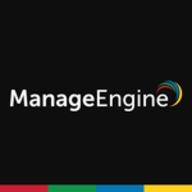

ManageEngine ServiceDesk Plus and Zoho Desk are engaged in the IT support and customer engagement software category. ManageEngine seems to have the upper hand in IT service functionality, while Zoho Desk leads in customer interaction features.
Features: ManageEngine ServiceDesk Plus offers customizable SLAs, lifecycle management, and integration with ITIL processes, enhancing IT service delivery. Zoho Desk provides multi-channel support, a user-friendly interface, and integration with other Zoho applications, improving customer engagement and productivity.
Room for Improvement: ManageEngine users experience challenges in feature customization, integration with third-party systems, and workflow flexibility. They seek refined reporting and enhanced automation. Zoho Desk users desire better IT service management, improved social media integration, and more flexible customizations in notifications and layouts.
Ease of Deployment and Customer Service: ManageEngine offers on-premises and cloud deployment options, enabling versatile implementation but suffers from inconsistent customer support responsiveness. Zoho Desk, primarily cloud-deployed, provides easy deployment but also faces mixed feedback on customer support, especially with free versions.
Pricing and ROI: ManageEngine ServiceDesk Plus is favored for its affordable pricing, appealing to small and medium enterprises, with both on-premise and cloud solutions offering strong ROI. Zoho Desk, though cost-effective with flexible subscription options, can have higher pricing at certain tiers but remains competitive, offering good ROI potential aligning cost with functionality.
ManageEngine has been particularly beneficial for small and medium-sized businesses in terms of value for money since they receive similar service at a lower cost compared to ServiceNow.
The Zoho platform is powerful when used correctly, but without a specialist, it is not simple to configure and make full use of the tools.
The ManageEngine technical support team deserves a rating of ten out of ten because we receive up-to-date support.
We have never needed to escalate any issues.
Their response time could be quicker.
the experience was satisfactory
I find the response time in emails to be very good, and the solutions provided are simple.
It is trickier to expand across endpoints with Help Desk.
The tool is suitable for medium to large-scale operations and can be used effectively by mid-size companies.
Scaling ManageEngine ServiceDesk Plus is easy, and I would rate its scalability as nine out of ten.
We have not experienced any significant issues.
We have not faced any stability issues or challenges with this tool.
It would be beneficial to have an option to assign approvals to a user group or a variable.
They might consider creating a bundled ERP solution for all these tools where purchasing one license would enable access to all functionalities.
There could be improvements in licensing flexibility, like the ability to use a single license for multiple users simultaneously.
Zoho Desk could be improved by making it multi-tenant, as it is currently not suitable for service providers with multiple customers.
The main concern is the pricing of Zoho Desk, as I consider it to be on the expensive side.
The cost of ManageEngine is more affordable, making it viable for small to medium-sized businesses.
It is not as expensive as ServiceNow, which has a very high cost.
The costing for ManageEngine ServiceDesk Plus is very flexible and is considered low-priced.
The pricing for each user is around $350, with penalties if not all users in a company are licensed.
The price point is a concern.
The solution is user-friendly and has all the features we need.
The automation features in ManageEngine ServiceDesk Plus are what I like the most, particularly the business rules and customization capabilities.
It provides a simpler and more intuitive interface for creating semi-automated use cases and managing problem solutions.
Maintenance is easy, and one person is sufficient for handling it, aided by a thorough handoff of key pointers facilitating easier initial setup.
The AI tool, Tele Zia, translates calls into bullet points, providing insights such as when to send emails or contact the customer based on previous conversations.
| Product | Market Share (%) |
|---|---|
| ManageEngine ServiceDesk Plus | 5.1% |
| Zoho Desk | 2.5% |
| Other | 92.4% |


| Company Size | Count |
|---|---|
| Small Business | 31 |
| Midsize Enterprise | 24 |
| Large Enterprise | 19 |
| Company Size | Count |
|---|---|
| Small Business | 19 |
| Midsize Enterprise | 2 |
| Large Enterprise | 1 |
ManageEngine ServiceDesk Plus (MSP) is a comprehensive help desk tool that has built-in asset and project management. MSP can be deployed in the cloud or on premises. The solution enables its users to track configuration changes, map relationships, and view graphical displays of data for more informed decision making.
The two main focus points of MSP are IT request tracking and asset management. MSP’s integrated centralized management console enables technicians and system administrators to efficiently resolve complex issues and keep track of their organization’s needs and ensure constant availability.
With MSP's automation of multiple service desk processes, you can easily save time by automating repetitive and simple tasks such as task assignment, notifications, and categorizations. The automation of multiple processes helps reduce errors and lower costs while ensuring a fast turnaround of ticket handling processes.
ManageEngine ServiceDesk Plus Features and Benefits
MSP has a wide variety of features to help you optimize your help desk management:
Reviews from Real Users
MSP stands out among its competitors for a number of reasons. Two major ones are its comprehensive workflow management toolset and the flexibility it offers its users.
Mykola S., head of global IT delivery at Acino Pharma AG, writes, “CMDB as a baseline, incident management, service request management, and license management are valuable features. It offers really interesting features for complete use in an enterprise. You have one platform, and you could set up different service functions for HR, engineering, or another team in the same platform.
With Zoho Desk, agents become more productive, managers become more impactful, and customers become more empowered. It's customizable, convenient to use, and it doesn't cost you a fortune. Part of Zoho's 30-strong suite of business software, Zoho Desk brings you the power to put customer service at the heart of your company.
We monitor all Help Desk Software reviews to prevent fraudulent reviews and keep review quality high. We do not post reviews by company employees or direct competitors. We validate each review for authenticity via cross-reference with LinkedIn, and personal follow-up with the reviewer when necessary.